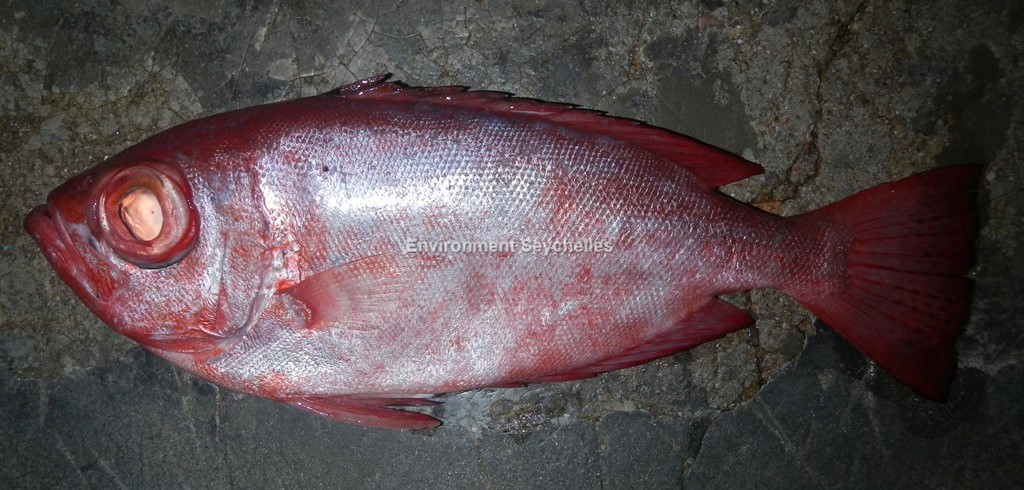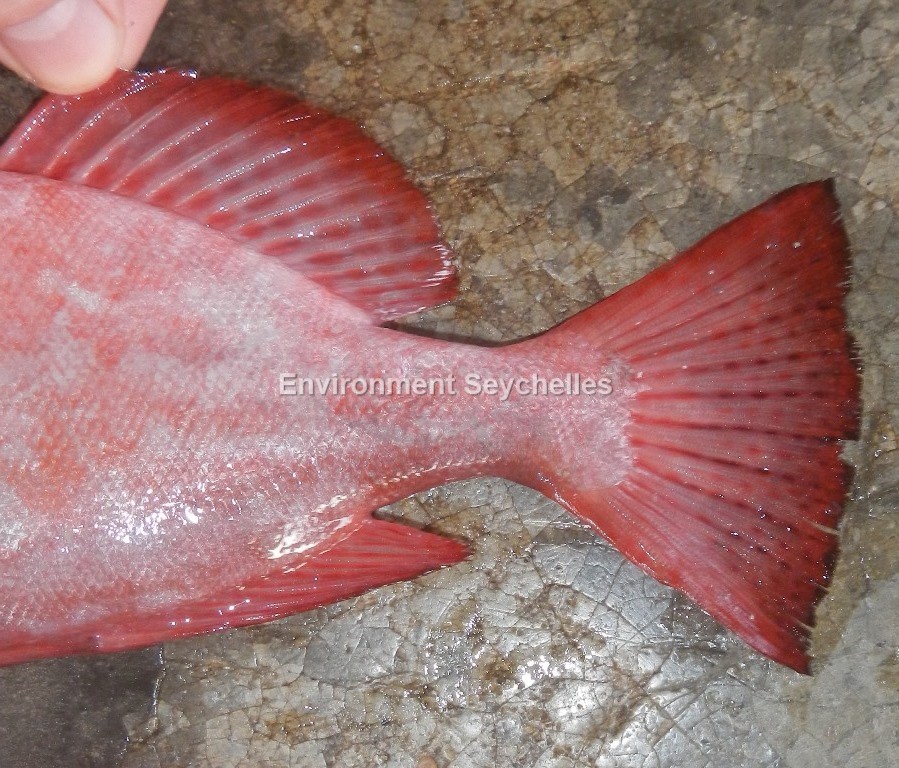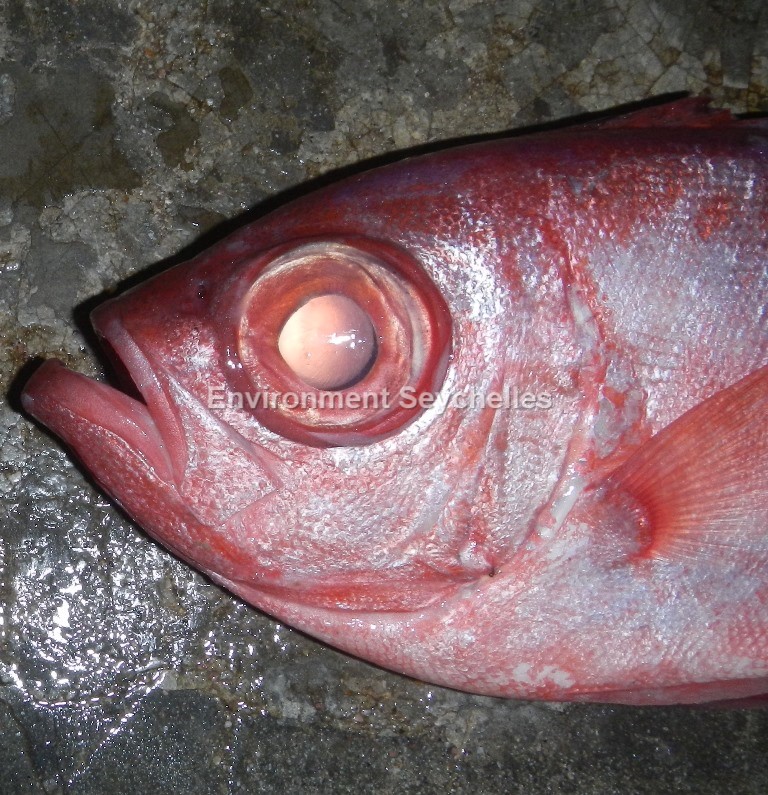Description:
Dorsal spines: 10; Dorsal rays: 13; Anal spines: 3; Anal rays: 14.
Body moderately full, ovate in lateral profile, laterally compressed. Dorsal profile flattened along dorsal fin base and ventral profile more curved. Scales covering most of head and body but scales lacking on posterior portion of preopercle. Eye large, interorbital space moderately broad and strongly convex. Snout short, smaller than eye. Mouth strongly oblique, lower jaw upturned and projecting. Posterior of maxilla below the anterior half of the eye. Nostrils close to each other, situated close to the eye at its upper margin. Anterior nostril small and rounded, with a posterior fleshy rim. Posterior nostril a transverse slit. Preopercular spine well-developed, extending almost to rear tip of subopercle. Long-based dorsal fin with spinous portion gradually longer, the last spine the longest. Pectoral fin relatively short and broadly pointed. Pelvic fin moderately long. One continuous long-based anal fin. Soft portions of the dorsal and the anal fins broadly rounded.
Caudal peduncle relatively long. Caudal fin truncate or slightly rounded.
Colour. Reddish to silvery-pink head and body often with red blotches. Iris of eye red. Median fins red with dark margins and small brown or blackish spots on posterior portions of dorsal and anal fins and the middle portion of the caudal fin. Pectoral fins hyaline. Pelvic fins dusky or pale and without distinct spots.
Size:
Maturity: Lm unknown. Range unknown. Max Length: 50.7cm TL. Commonly to 20cm SL.
Habitat and Ecology:
Inhabits shallow reef areas, where it may be common in both lagoons and seaward areas (depth 3-300m, usually 3-35m, commonly at depths of less than 20m). Usually sheltering under or near ledges and coral heads during the day. Feeds at night on larval octopi, pelagic shrimp, stomatopods, crabs, small fish, and polychaetes. May form large feeding aggregations at dusk, but during the day it occurs singly or in small groups.
Fishery Status:
This species is not protected or subject to fishery regulations. It is caught in the fish trap fishery and by hand line. It is an occasional but not abundant component of the catch.
Notes:
Fernandez-Silva & Ho (2017) reclassify the species restricting H. cruentatus to the Atlantic and southern Indian ocean off South Africa and renaming the species in the Indo-Pacific as H. carolinus. Not clear yet whether this change has received global acceptance.
References:
Bray, D.J. 2018. Heteropriacanthus carolinus in Fishes of Australia, http://fishesofaustralia.net.au/home/species/4461 (15/08/19).
Dooley, J. et al 2015. Heteropriacanthus cruentatus (errata version published in 2017). The IUCN Red List of 2015: e.T16749737A115363551. http://dx.doi.org/10.2305/IUCN.UK.2015-4.RLTS.T16749737A16750097.en. (15/08/19).
Fernandez-Silva, I. & Ho. H-C. 2017. Revision of the circumtropical glasseye fish Heteropriacanthus cruentatus (Perciformes: Priacanthidae), with resurrection of two species. Zootaxa 4273 (3): 341–361.
Froese, R. & D. Pauly. Eds. 2019. FishBase. https://www.fishbase.se/summary/1150 (15/08/19).
Starnes, W.C., 1988. Revision, phylogeny and biogeographic comments on the circumtropical marine percoid fish family Priacanthidae. Bull. Mar. Sci. 43(2):117-203.
Citation:




There are no comments